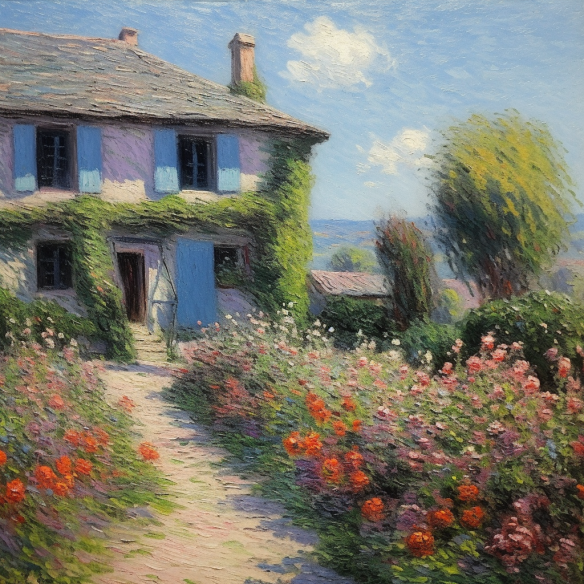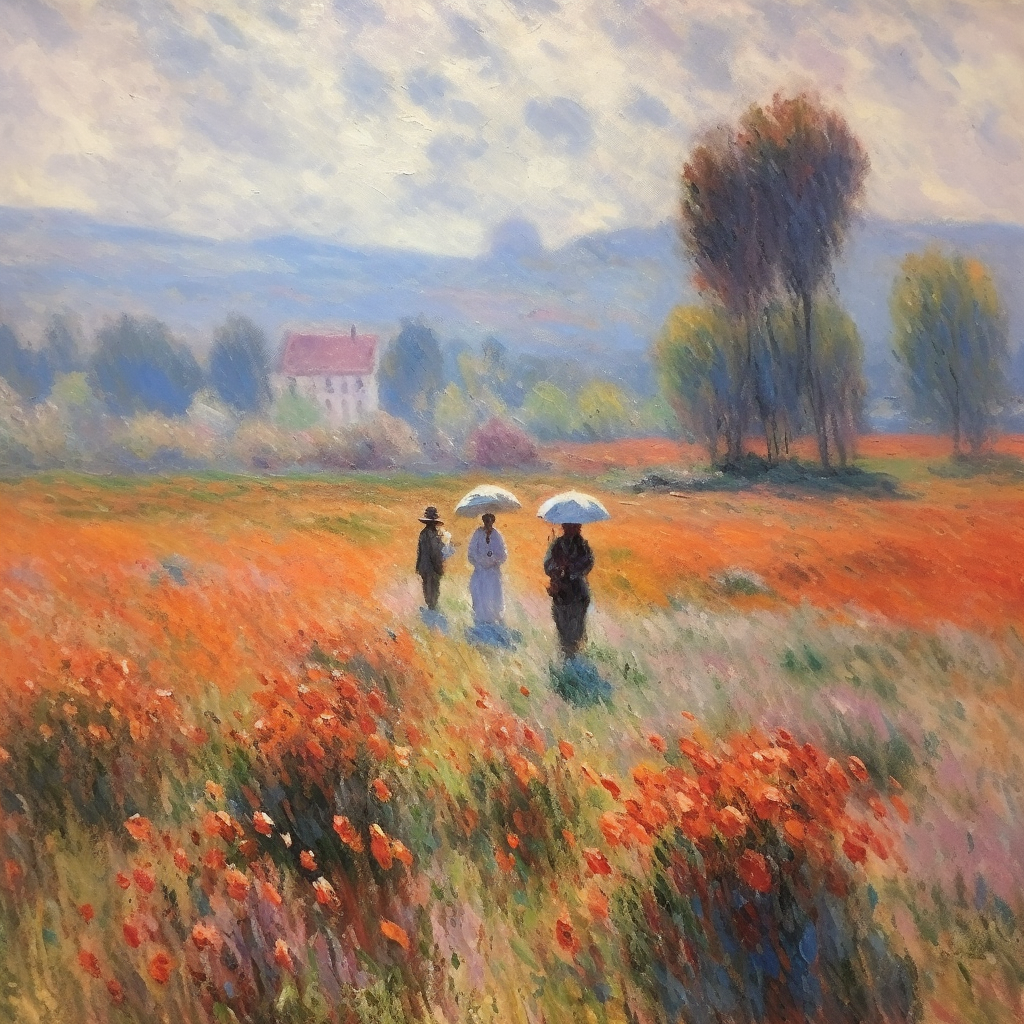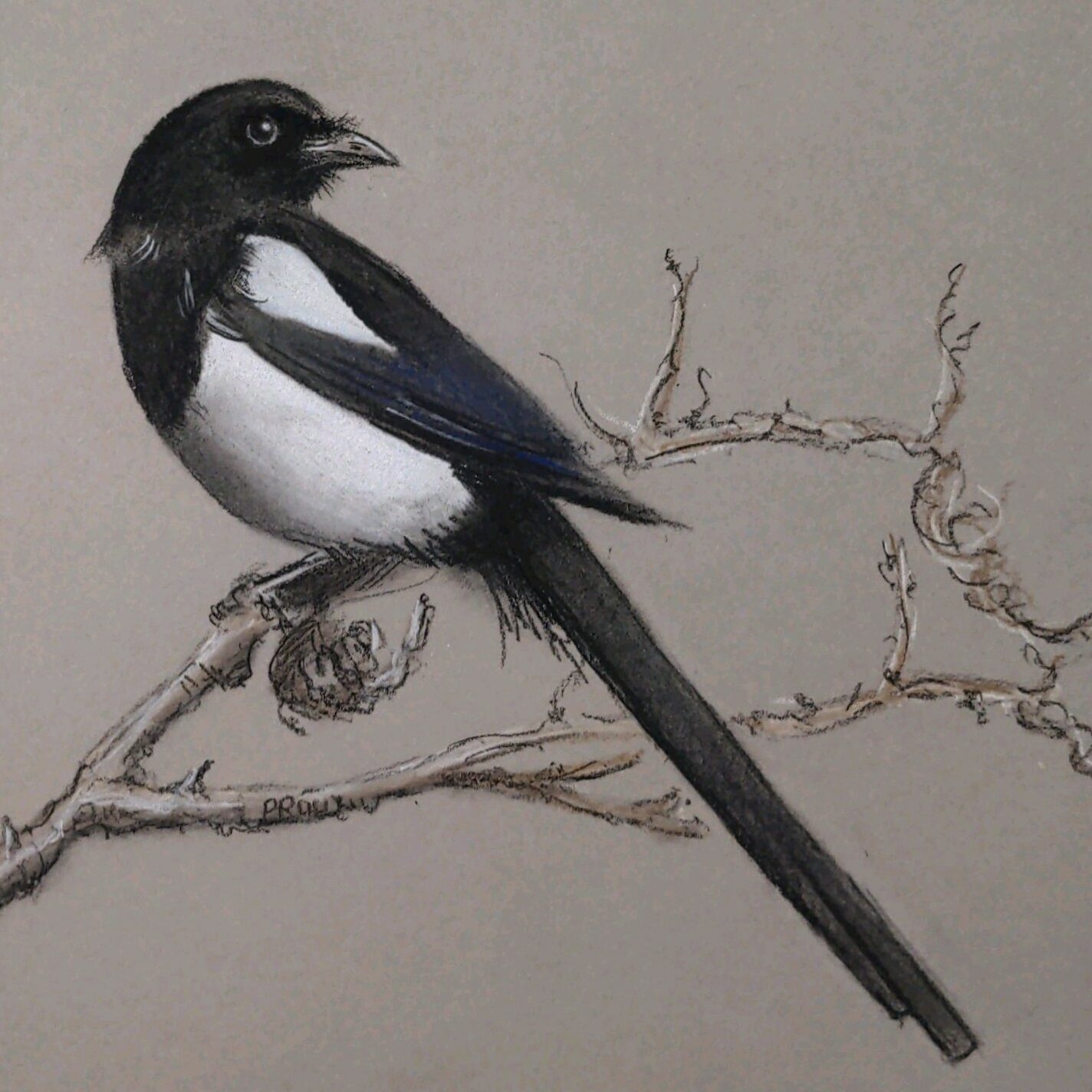Introduction
“Brushstrokes and Impressions: A Dialogue Between Monet and Caillebotte” is an imaginative exchange crafted by an AI, between two iconic figures of Impressionism: Claude Monet and Gustave Caillebotte. This conversation, although not historically recorded, has been created based on the known perspectives and artistic philosophies of these artists. Through this AI-constructed dialogue, they discuss the essence of Impressionism, the significance of their chosen subjects, and their individual views on the future of the movement. This fictional discourse provides an intriguing exploration of their shared passion, offering insights into how they might have conversed about their work and its enduring impact. Whether it’s the bustling city streets or the tranquil natural landscapes, their commitment to capturing the fleeting beauty of the world around them is brought to life in this engaging dialogue.

What is the future of impressionnism ?
Monet: Ah, Gustave, it’s good to see you. I’ve been meaning to have a chat about our shared passion.
Caillebotte: Indeed, Claude. I’ve been quite fascinated with your recent works. There’s an undefinable quality to your landscapes.
Monet: That is the essence of Impressionism, isn’t it? We aim to capture the essence, the feeling, not just the appearance. The fleeting effects of light and color, the ephemeral moments…
Caillebotte: Yes, the fleeting moments. But don’t you think we should also focus on the accuracy of forms? After all, drawing is the honest and precise representation of what we see.
Monet: But, Gustave, Impressionism is not about precision. The beauty we seek is not in the exact lines but in the feeling, the atmosphere, the impression. It’s about painting what we feel in our hearts when we see the scene, rather than what we see with our eyes.
Caillebotte: I see your point, Claude. But even in our interpretation of the world, there’s a place for technique, for structure. We can’t ignore the importance of drawing.
Monet: It’s not about ignoring, Gustave. It’s about evolving. We’re not merely replicating the world; we are expressing our personal impressions of it. The structure is still there, but it’s fluid, ever-changing with light and time.
Caillebotte: And you think this is the future of Impressionism?
Monet: The future of Impressionism, Gustave, is not for us to dictate. We are only the pioneers. We push the boundaries, but it’s the next generation who will decide its course.
Caillebotte: Well, the thought is somewhat daunting. I hope they keep the essence of our work intact. After all, we’re trying to break free from the constraints of traditional art.
Monet: As long as they continue to see the world not just with their eyes, but with their hearts, the essence of Impressionism will survive. It’s about the fleeting beauty of the world, about capturing the essence of the moment. And that, Gustave, is timeless.
Caillebotte: Indeed, Claude. Well said. The beauty we find in the ordinary, the everyday… it is indeed timeless.
Monet: That’s the spirit, Gustave! Let us continue to paint not what we see, but what we feel. In doing so, we not only create beauty but also shape the future of Impressionism.
On painting subjects

Monet: Speaking of painting subjects, Gustave, I’ve noticed your preference for the urban environment. Your work “Paris Street, Rainy Day” is quite an achievement.
Caillebotte: Thank you, Claude. Yes, I do find beauty in the hustle and bustle of city life. The rain-soaked streets, the people engrossed in their own world, there’s a certain charm to it.
Monet: I’ve always been drawn more to the natural world, the changing seasons, the play of light on water. It’s fascinating how we both work in the same style but our subjects are so diverse.
Caillebotte: That’s the beauty of Impressionism, isn’t it? It allows us to explore our own interests, our own perspectives. The urban life, the countryside, the seashore… they’re all equally compelling under our brushes.
Monet: Indeed, Gustave. It’s all about capturing the essence, the atmosphere. But I wonder, have you ever thought about painting landscapes?
Caillebotte: I’ve dabbled a bit, especially with my garden in Yerres. But I must say, Claude, you have a certain magic when it comes to painting the natural world.
Monet: And you have a knack for capturing the urban scene, Gustave. Each of us should paint what speaks to us, should we not?
Caillebotte: Absolutely, Claude. It’s all about authenticity, about painting what we know and love.
Monet: And that’s what makes our work unique, Gustave. Our subject choices are not just subjects; they are fragments of our lives, our experiences. They are what make Impressionism so relatable.
Caillebotte: I couldn’t agree more, Claude. It’s not just about painting a pretty picture, it’s about telling a story, capturing a moment in time. That’s where the true beauty of Impressionism lies.
Monet: Well said, Gustave. Let us continue to paint our truths and let the world see the beauty in our impressions.
Training of young generations
Monet: Gustave, we’ve been discussing the future of Impressionism. But what about the next generation of artists? How do we ensure they carry forward our vision?
Caillebotte: That’s a good question, Claude. We must inspire them to break free from traditional constraints and to explore their own perspectives.
Monet: Yes, but we must also ensure they understand the essence of Impressionism. It’s not about discarding technique, but about seeing the world in a new light.
Caillebotte: True, Claude. It’s about embracing the beauty of the moment, capturing the world as they see it, not as it is prescribed to be seen. We must encourage them to trust their instincts, to paint their own impressions.
Monet: Indeed, Gustave. They must learn to observe, to truly see. To notice how light changes with the time of day, how colors are affected by the seasons, how a simple landscape can evoke such complex emotions.
Caillebotte: And we must remind them that Impressionism is about authenticity. It’s about painting their own experiences, their own emotions. They should not aim to simply recreate our work, but to create their own.
Monet: Well said, Gustave. It’s about guiding them without restricting them. We must inspire them to be bold, to experiment, to find their own path.
Caillebotte: I agree, Claude. After all, that’s what we did. We didn’t conform to the traditional norms; we created our own. And that’s what the young generation must do too.
Monet: Exactly, Gustave. The future of Impressionism lies in their hands. And as long as they continue to paint with their hearts, the spirit of Impressionism will live on.
Painting skills
Monet: Gustave, while we agree on the core philosophy of Impressionism, I think we differ a bit on how we approach our craft.
Caillebotte: Indeed, Claude. You seem to lean more towards the abstract, your brushstrokes emphasizing the fleeting nature of light and color.
Monet: True, Gustave. For me, it is about creating an impression, a feeling. My approach is to use loose brush strokes, playing with the intensity and temperature of colors to capture the moment.
Caillebotte: And it’s remarkable how well you do that, Claude. I, on the other hand, find a certain joy in combining this sense of impression with more defined structures. The form is important to me, even if it is rendered in a way that evokes an impression rather than a detailed representation.
Monet: That’s what makes your work so interesting, Gustave. You balance the abstract with the concrete. Your use of perspective, the play of light and shadows, it gives a sense of realism to your work while still maintaining the essence of Impressionism.
Caillebotte: Thank you, Claude. I believe we both share the same goal, to evoke emotion, to capture the beauty of the moment. We just have different ways of achieving it.
Monet: That’s what makes art so fascinating, isn’t it? There are no right or wrong ways, just different perspectives. And it’s through these differences that we push the boundaries and evolve.
Caillebotte: Absolutely, Claude. We must continue to explore, to experiment. Our styles may differ, but our passion for art, for Impressionism, unites us. And it’s through our shared passion that we inspire the future generation of artists.
Age and painting
Caillebotte: Claude, if I may, I’ve been wondering about something. As we age, as we gather more experiences and see the world changing around us, how do you feel this influences your work?
Monet: Ah, Gustave, that’s a thoughtful question. Indeed, age and experience have had quite an impact on my work. You know, as artists, our work is a reflection of our lives, our experiences.
Caillebotte: Yes, I agree, Claude. But how exactly has it affected your style, your approach to painting?
Monet: Well, Gustave, over the years, I’ve found myself increasingly drawn to the same scenes, the same subjects. I’ve started exploring them in different lights, different seasons, trying to capture their ever-changing nature.
Caillebotte: Like your series on the Haystacks and the Rouen Cathedral.
Monet: Exactly, Gustave. It’s like revisiting an old friend, seeing how they’ve changed, how they’ve stayed the same. There’s a comfort in the familiar, yet the ever-changing light, the seasons, they bring a new perspective each time.
Caillebotte: And do you think this is a result of aging, Claude?
Monet: I believe so, Gustave. With age, I’ve learned to appreciate the beauty in the everyday, the ordinary. I’ve learned to slow down, to observe, to truly see. I’ve become less interested in the grandeur, the spectacular, and more fascinated with the subtleties of life, the fleeting moments.
Caillebotte: That’s a profound thought, Claude.
Monet: It’s not just the subjects, Gustave, but also the way I paint. Over the years, my brush strokes have become looser, more abstract. I’ve started focusing more on the overall effect rather than the details. It’s like my vision has broadened, yet paradoxically, it has also become more focused.
Caillebotte: That’s an interesting paradox, Claude.
Monet: Yes, Gustave. It’s like I’m seeing the bigger picture, yet I’m also more attuned to the details. The play of light, the shift of colors, the rhythm of nature… I’m more aware, more in tune with these subtleties. And I believe this is reflected in my work.
Caillebotte: Indeed, Claude. Your work has evolved beautifully over the years. It’s a testament to the artist you are, constantly evolving, constantly growing.
Monet: Thank you, Gustave. But you see, it’s not just about growing as an artist, it’s about growing as a person. And as we age, as we gain more experiences, our perspectives change, our perceptions change. And this, Gustave, is what shapes our work, what influences our art.
Conclusion
In conclusion, the dialogue between Edgar Degas and Claude Monet on the subject of learning drawing provides some valuable insights into their perspectives. Both artists emphasize the importance of practice and observation in improving one’s drawing skills. They acknowledge the need to study from real-life subjects and develop a solid understanding of anatomy and structure. Additionally, they agree on the significance of exploring different techniques and styles to find one’s unique artistic voice.
